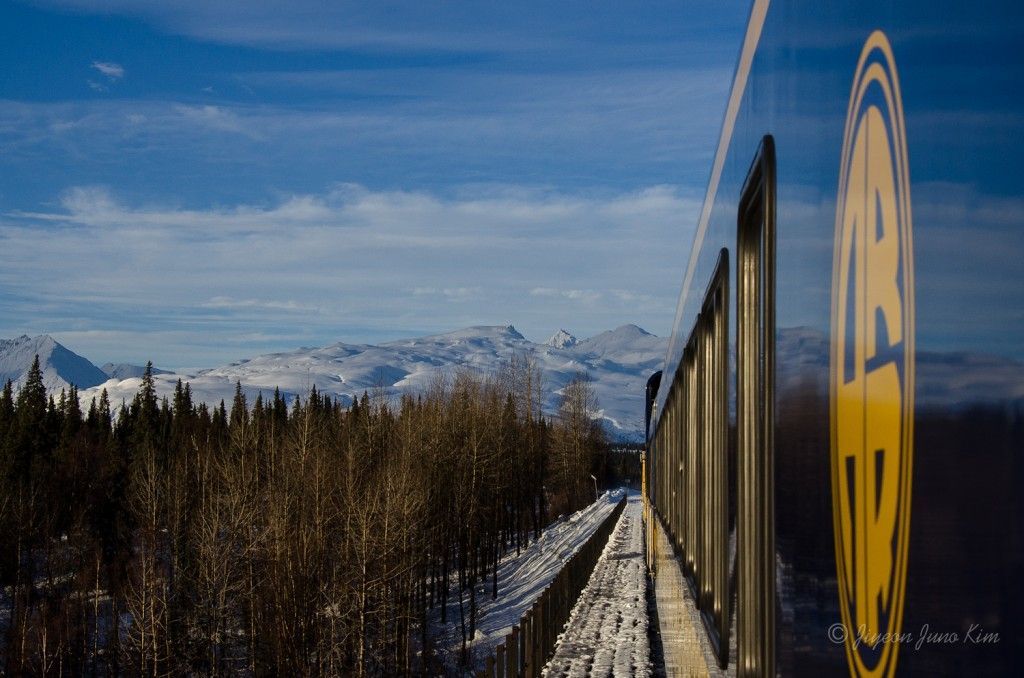Okay, it’s time to plan your winter destination. Where is it going to be? Are you the kind of person who’d spend the winter on a tropical beach with a mojito, or would you head north to face cold temperatures? I’ve done both, but I find the latter option far more satisfying.
If you want to experience the winter and make the best out of this cold and dark period, I recommend you to consider visiting Fairbanks, Alaska. In winter, the temperature goes down to negative 40 Fahrenheit. You need an electrical heater in your car, and plug it into the power socket when your car’s not running (otherwise you can’t restart your engine). Just a normal winter coat and shoes won’t do in Fairbanks. Frostbite is a real threat, and you need a house sitter to run your pipe everyday to prevent frozen pipes. The greatness of Fairbanks and surroundings triumphs these little challenges.
The Northern Lights
Native Alaskans considered the Northern Lights as an important part of their lives. It’s deeply incorporated in their artwork, crafts, and culture. Even in these days of technology and scientific knowledge, we can describe exactly what’s happening up there, the Northern Lights still seem like magic. There are only selected places in the world where you can experience this phenomenon, called auroral oval. This location provides a great balance of both frequency and activity. With its steady clear sky, Fairbanks will definitely satisfy your curiosity from August to April.

The Alaskan Arctic
Fairbanks is the gateway to the Alaska’s interior and grand Alaskan Arctic. If you want to explore the lesser-known world, head to the Alaskan Arctic. Thanks to the Trans-Alaskan Pipeline and oil industry, now we can visit the Arctic by the Dalton Highway. The most popular option is visiting Coldfoot, the second to last service station in the Brooks Range. There are many activities in summer, such as flight sightseeing, hiking, rafting, fishing, but winter months bring excellent aurora viewing and dog mushing excursions with local mushers. Exploring the Brooks Range and Atigun Pass are also a great option. It’s where you can see the Arctic desert. It takes about 12 hours to reach Coldfoot from Fairbanks by car, and 1 hour by plane. Don’t forget to take a photo with the “Arctic Circle” sign at 66.5622 degrees north.
History: Prudhoe Bay and Trans-Alaska Pipeline
One of the largest pipeline systems in the world, the Trans-Alaska Pipeline is one of the key factors of Alaskan history. It includes a crude-oil pipeline, pump stations, and Valdez Marine Terminal. The pipeline was built between 1974 and 1977 after the 1973 oil crises in the US. The task of building this pipeline was difficult because they had to to deal with various problems such as permafrost. Special construction techniques were developed because of this — and you can see it yourself on the pipeline. It runs alongside of the Dalton Highway and Elliot Highway in the north. The Dalton Highway was built as a supply road to support the pipeline. It crosses the Yukon River whilst the bridge carries the pipeline. The highway is mainly used by truckers, but also tour vans share the road.

Alaska Aurora Winter Train
The Aurora Winter Train is a comfortable and pleasant way to reach Fairbanks from Anchorage. Operating weekends from mid-September to mid-May, this winter train is not only the best transportation option to the interior, but also provides visitors a chance to witness the vast scenery and wildlife of Alaska for 12 hours. If you are lucky, like me, you’ll see the clear view of the Alaska Range and Mount Mckinley. Mckinley is the highest mountain peak in North America and is well known by its native name Denali. Our train captain pointed out a small herd of caribou, moose, and mountain goats. You can get a great photo through the windowless-compartment.
Fairbanks
As a university town, Fairbanks has an interesting vibe. Great artesian coffeeshops are easy to find, where you’ll often encounter university students, freelancers, and coffee lovers. The University of Alaska Museum of the North is one of the best to learn details about the science, culture, and art of oceans. It is filled with interesting stories about native Alaskans, wildlife, Alaska’s native art, and interactive exhibitions. The highlight of the museum is “The Place Where You Go to Listen”. It’s an ever-changing sound and light environment driven by the real-time position of the sun and moon and earthquakes and aurora activity. This beautiful building also provides you the best view of the mountains. The World Ice Art championship takes place every year in February or March. Ice sculptors from all around the world gather here to create the most stunning ice sculptures.